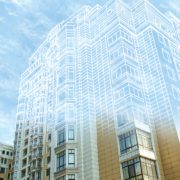The San Diego Life Science Demand is Heating Up
According to Forbes, the San Diego life science industry is on an uptick. Second-ranked to Boston in dollars per venture capital transaction, the San Diego life science industry produces $41 billion in economic activity and accounts for approximately 68,000 jobs. Although Alexandria, BioMed Realty, Longfellow, and Phase 3 Real Estate Partners have proven the four main San Diego leaders in life science development, there are some new developers coming to town. Let’s delve into what you need to know about the life science demand in San Diego.

How Did This Happen?
The demand for scientific research has grown significantly over the past 10 years. A global pandemic was the cherry on top last year and caused investors to peek their eyes at the industry, and opportunity, more than ever. This momentum, however, did not accrue overnight. In fact, long before the COVID-19 pandemic, San Diego was a vibrant life science community.
It was over 20 years ago that Sorrento began to see its first research and development (R&D) efforts. Industrial buildings were converted to life science buildings to reduce their occupancy costs, as compared to Torrey Pines. Today, Torrey is fully built out. Most industrial or R&D buildings in Sorrento have been or will be in the process of being converted to life science space.
In addition, Longfellow is converting a Class A office building with plans to scrap two other projects. As a result, Longfellow will construct over 1M square feet of Class A life science over the next two to five years as leases roll over. Alexandria is also purchasing an office building that will eventually be demoed for future development.
The vacancy rate is currently sub 1% in UTC/Torrey Pines and looks to remain that way over the next three years as demand is clearly outpacing supply.
Alexandria is the dominating player in the market with 7.6M square feet of existing product and another 8M square feet of development in the pipeline over the next three years. Furthermore, Alexandria happens to hold the highest number of life science properties in the country. In fact, they recently “closed on an estimated $3 billion in life sciences real estate last year in addition to the 2.8 million square feet that the company has under construction.”
With deal volume increasing 93%, 2020 brought a newfound quick pace to the San Diego life science commercial real estate market. According to Jones Lang LaSalle Incorporated, the year alone brought 92 completed lease transactions which spread over 2.2 million square feet in San Diego.
“That momentum has carried into the first quarter of 2021, with the quarter producing 33 completed transactions that accounted for 758,160 square feet of total square feet leased,” JLL reported. “Total leasing volume during the first quarter was 67% higher than the previous quarter, 221% higher than activity from the first quarter of 2020 and an increase of 188% from the first quarter five-year trailing average.”
This record-breaking demand has resulted in historic low vacancy rates, shedding light on the limited supply of existing web lab space.
The Missing Puzzle Piece
As the life science market continues to increase rapidly, it proves tempting for investors, developers, and building owners to hop on the bandwagon. They see this influx as an opportunity to develop their own life science spaces.
But it’s not that simple. It’s important to remember that while investment in lab space has increased, developing lab space is not for everyone. Developing life science real estate is risky and takes huge amounts of capital with improvements for new space over $250 per square foot.
“It isn’t a magic cure-all to an empty suburban office building to put a lab in it, since nine times out of 10, it’s not going to work or be possible,” says Cunningham.
There is a rush for life science space; however, the teams necessary to transition traditional commercial buildings to labs are few. The specific requirements of lab space, including fitting issues and zoning prerequisites prove difficult to overcome. It is a challenge to convert traditional commercial space, like retail, into a life science center. Stockbridge, however, will entertain life science tenants within the former Horton Plaza project.
Regardless of the challenges to overcome, research tells us “more than 36 million square feet of new construction is expected to be delivered in the top 14 life science markets across the United States.” We, at Voit Real Estate Services, are excited to watch developments pan out.










